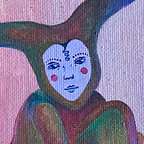How do UX practices fit with agile development practices?
This is still a big challenge today for many companies.
Firstly, every company should discover its own way to fit anything into their culture. Without customizing the practices according to business objectives and strategy, the company culture cannot adopt them easily. Here mindset is more important than the method itself.
Let’s review how agile works very shortly to be able to address the relationship better;
- Well organised product backlog with user stories with a prioritization based on user needs, business objectives, strategy etc. is important,
- Team needs to adopt incremental development mindset,
- Iterative process is essential. It should come closer to the desired result as the number of iterations increases.
Considering only these three, we can see how agile approach welcomes UX practices. So let’s first see how we can relate user stories and UX practices.
User stories help shift the focus from writing about requirements to talking about them, which is already a user-centered approach and also something that a UX specialist must take the responsibility of writing.
Here another thing is, PO/PM needs to have a multidisciplinary vision to prioritise these user stories to deliver the best matched value with the product vision. UX practices significantly help product deliver that value.
Now let’s consider incremental development;
Here is a graphic by Henrik Kniberg that illustrates the ideal way of incremental development with the comparison of the common implication that results in weak user experience over time.
If you create a skateboard, not a wheel, you can at least give your user something viable in the beginning of your product lifecycle. With that viable thing, you should be after whichever you say of these ideas;
“Fail fast, learn faster or fail fast, fail often or fail better or try fast, fail fast, evaluate fast or fail fast to innovate faster”
So you have a minimum viable product at the beginning but until this stage, you have already known your target group, you have created your personas, analysed their minimum needs, created hypotheses over their needs and wanted to see if it works.
With incremental approach, you focus the small pieces and thus you can have better, focused hypotheses to user problems. Tracking the user experience, focusing on the right problems, iterating to find a better solution is easier.
So both incremental approach and UX practices feed each other. Without a well designed incremental approach in agile, being a UX specialist for a product is quite tough indeed.
As last, iterative process;
With each iteration, the product is improved through the addition of greater detail. UX practices need to support that process by tracking users to see if it is achieved the goal in every iteration.
Iterative process supports learning through the product life cycle. You need to set your metrics to track and test if your hypotheses work. Without tracking what you already create, you cannot learn from your users and you will most likely fail at creating value. A UX specialist needs to follow the evaluation path all the time to be able to recommend new solutions to the problems.
As I’ve seen so far, the most challenging thing about UX and agile is time management. UX practices sometimes can take time to progress (depends on the method, specialist’s experience, product itself etc.), and fast phased product development may not be able to embrace UX processes. However, if focused on the right problems and well prioritization of needs of users and lean principles and guerilla tactics, UX practices definitely fit well into agile process.
So, agile and UX practices should not be considered working separately. Organization culture should be able to adopt user-centered design mindset and agile philosophy both together.
